
Agent vs. Self-Planned Umrah from the UK: Pros and Cons
August 3, 2025 No Comments
Performing Umrah is one of the most spiritually significant journeys a Muslim can undertake. For…

Home / Feasting Between Prayers: A Foodie’s Guide to Umrah
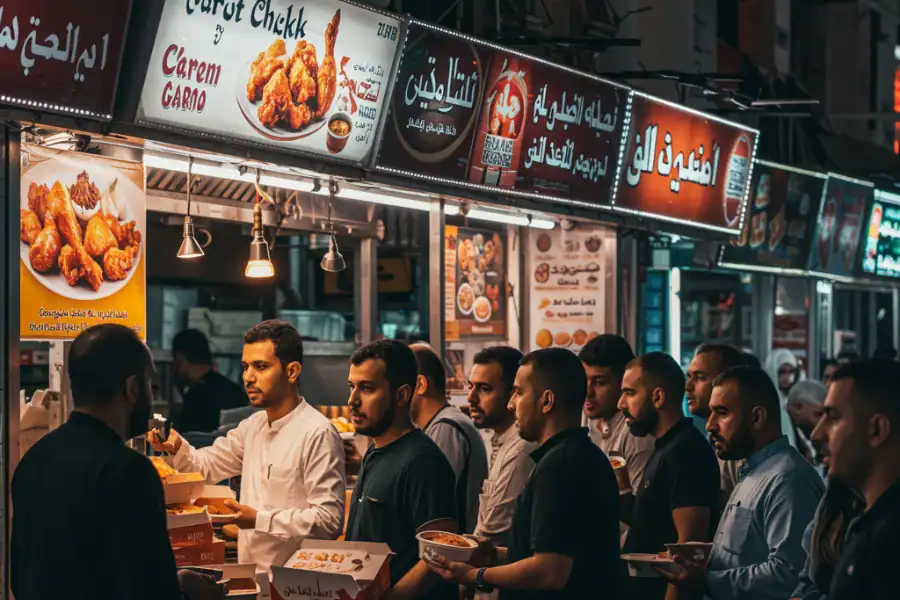
The journey of Umrah feeds the soul—but it can also delight the taste buds. In Makkah and Madinah, halal cuisine reflects centuries of tradition and hospitality. Whether you’re seeking quick eats or a fine-dining break between prayers, here’s how to savor the flavors without missing a moment of your spiritual pilgrimage. This food guide will help you navigate meals with ease.

Dining during Umrah—especially when traveling with Ramadan Umrah Packages—doesn’t mean compromising on flavor or authenticity. From iconic chains to hidden local gems, these restaurants are popular for good reason—they’re quick, clean, and rich in cultural taste. Keep this food guide in mind as you explore both convenience and quality.
If you’re seeking balance between quality and cost, mid-range eateries serve satisfying meals in casual settings. Great for groups and those looking to enjoy a hearty sit-down.
Want to relax and recharge in a calmer atmosphere? High-end hotel restaurants offer wide buffets, elegant ambiance, and a chance to reflect on your day with nourishing meals.
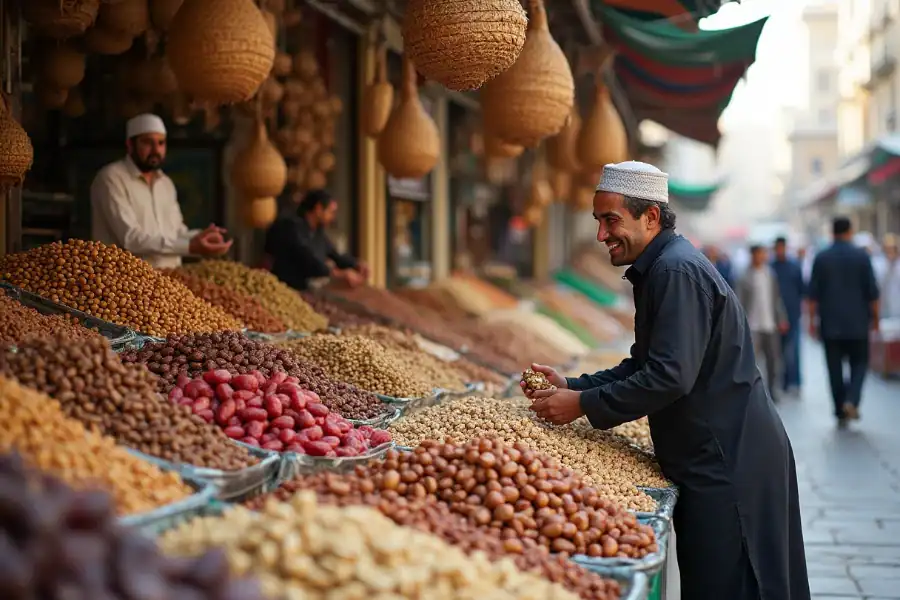
Dates and nuts are not just snacks—they’re part of the spiritual and cultural heritage of Umrah. Stock up at these trusted spots where quality meets affordability. A smart food guide will always include healthy grab-and-go options.
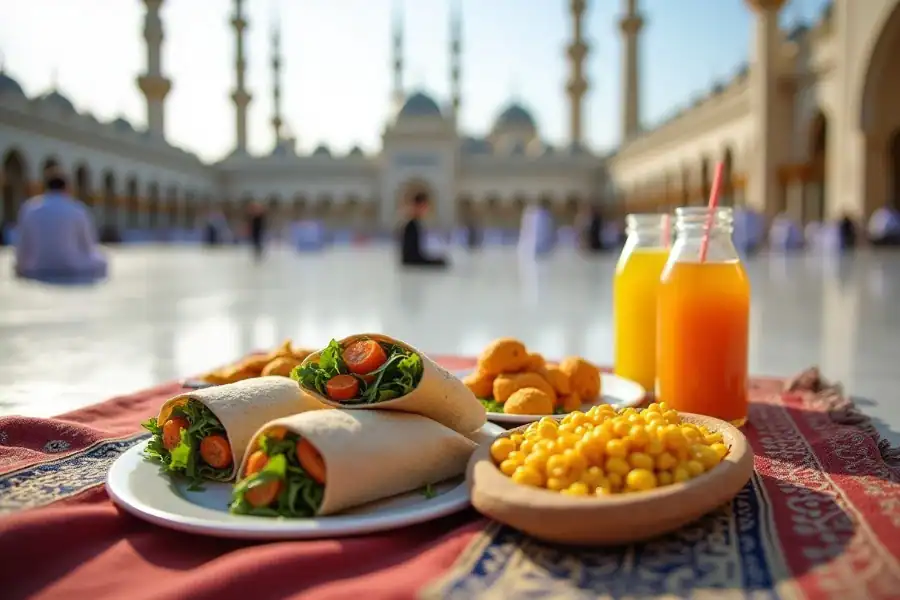
Need something light between Salah or while moving between sacred sites? These snacks are quick, filling, and easy to carry—ideal for pilgrims on the go.
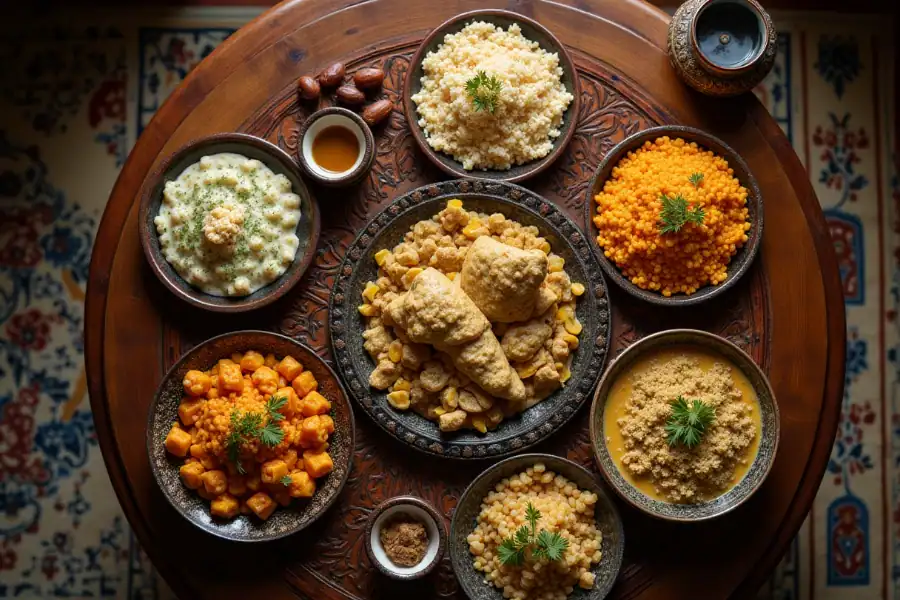
Saudi Arabia’s rich culinary heritage is reflected in these traditional meals. For those traveling with Private Umrah Packages, each dish offers not just sustenance and flavor, but a deeper connection to the local culture and comfort rooted in centuries of tradition.
A signature national dish: spiced basmati rice with chicken or lamb cooked in a blend of cinnamon, cardamom, cloves, and bay leaves.
Tip: Order in a group—served on one large platter.
Originating from Yemen, mandi features slow‑cooked meat with deeply smoky rice—braised underground or in a tandoor-like method.
Where to try: Both cities; staple at mid-range restaurants.
A creamy wheat and meat porridge—comfort food par excellence.
When to have: Especially good after Fajr or when you need a soothing, easy-to-digest meal.
Local version of samosas—crispy, triangular, filled with cheese, meat, or spiced veggies.
Order: As an appetizer or snack.
Stuffed pancake or paratha, cooked on a hotplate, sometimes layered with eggs, cheese, or minced meat.
Best eaten: Hot off the griddle—don’t wait.

Staying close to the Masjid al-Haram or Prophet’s Mosque? These nearby spots are convenient, reliable, and perfect for pre- or post-prayer meals.
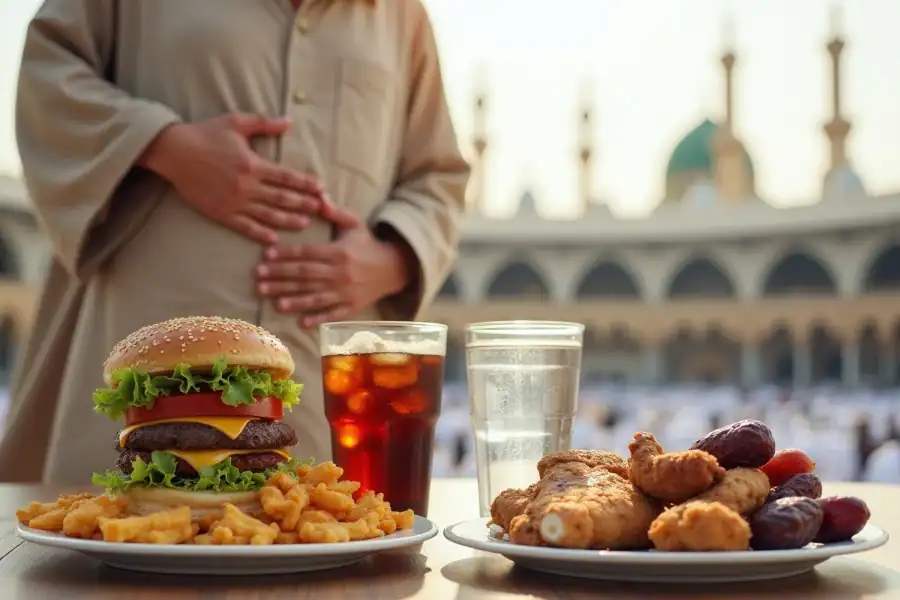
The wrong food choices can sap your energy and affect your rituals. This section of the food guide highlights what to minimize or skip altogether to keep your body and focus intact.

Healthy eating helps you maintain strength for all rituals. These tips are easy to follow and make a big difference in your energy levels and endurance.
Sweet treats and light drinks can uplift your mood and digestion. These options are local favorites that refresh the body without overwhelming it.
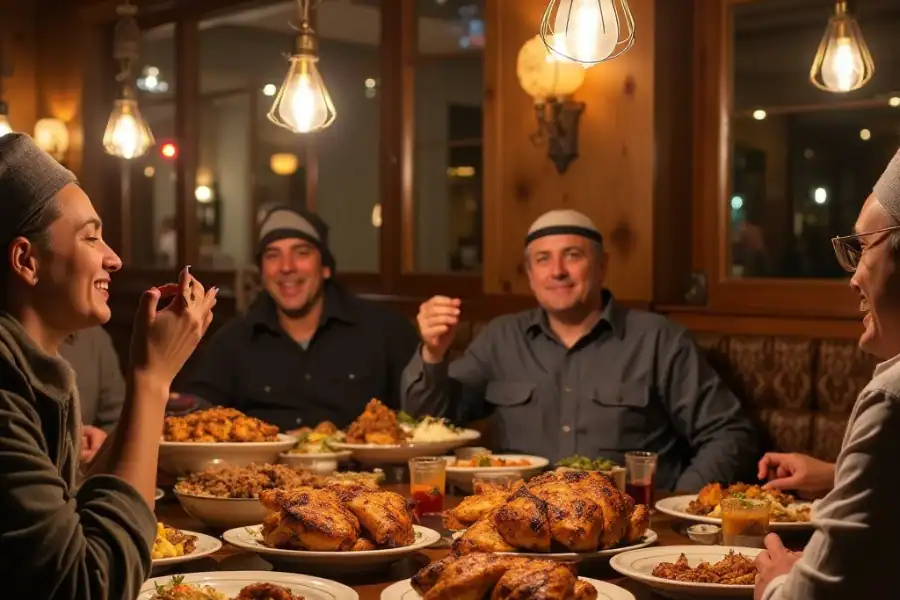
Respecting local customs around food makes the experience even more meaningful. Here’s how to dine with courtesy and appreciation.
Planning ahead helps you eat well and stay focused on your worship. This sample schedule balances nutrition, convenience, and prayer timings.
| Time | Meal | Place |
|---|---|---|
| Pre‑Fajr | Small bowl of Harees | Hotel room or cafe |
| After Fajr | Kabsa with chicken | Local restaurant |
| Mid-morning | Dates & nuts + Kahwa | Street-side stand |
| Noon | Shawarma wrap + juice | Food stall near Haram |
| Mid-afternoon | Luqaimat + mint tea | Souk or street vendor |
| After Maghrib | Mandi lamb + rice | Shahd or Al Deyafa |
| Evening | Light fruit salad | Hotel or lounge |
| After Taraweeh | Kunafa + Kahwa | Dessert kiosk (Haram) |
Your Umrah food journey should complement—not distract—from your spiritual goals. Choose halal, clean, and energy-sustaining foods. Mix affordable street eats with moments of splurge. Stay hydrated, take snacks on the go, and allow time for proper rest and digestion.
A trusted Umrah travel agency can even help guide your dining choices, recommending local spots that align with both your schedule and dietary needs.
This culinary adventure will become part of your pilgrimage story: the comfort of kabsa after Tawaf, the sweetness of luqaimat under the night sky, and the simple pleasure of dates washed down with Khajoor tea. Feasting between prayers isn’t just about eating—it’s about savoring memories. Bon appétit and blessed journey!
Our curated content will ensure you’re well–prepared and inspired every step of the way.